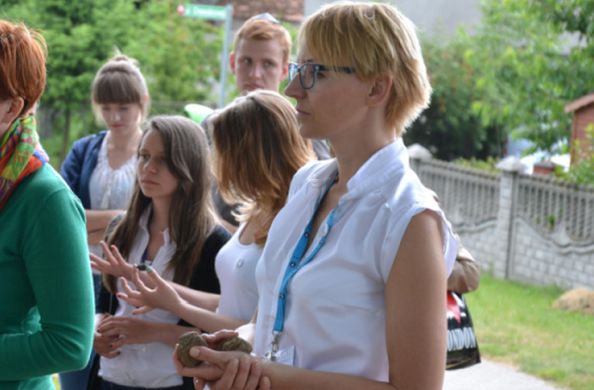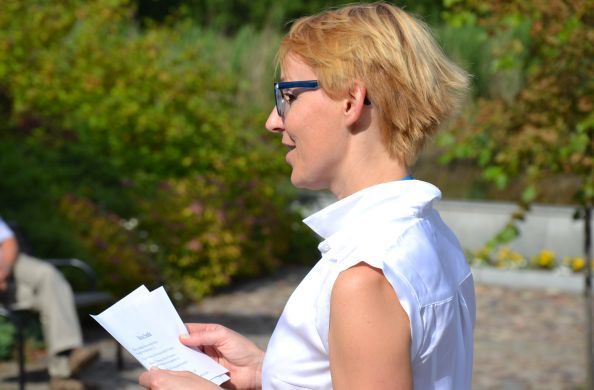The station’s hall is rented out by “Nasz Dom” (Our House) Foundation that runs a second-hand store there. Jews lived in Zbąszyń for a few centuries, becoming part of the town’s history and culture, which is something I believe more people should be aware of. With my students, we met with a number of individuals whose knowledge helped us obtain the necessary information; they were eyewitnesses and researchers on local history. We sought information in scholarly publications, documents and on the Interne, putting in a lot of effort to design a walking tour through Zbąszyń’s streets. Now we know where the local Jewish tailor Lubraniecki lived, what gained Leopold Cohn, a Jew from what was once known as Strzelecka street, respect from the local community and why the Jewish cemetery is so far away from the town’s center.
The result of our project is a scenario for a tour of Jewish Zbąszyń. In the course of the walking tour (there is also a bike tour version) we present our participants with multicultural “Zbąszyń Balagan”. “Balagan” is a Hebrew word taken from Polish and meaning chaos, disorder and mix – a sort of a “mess”. A mix of nationalities (Poles, Germans and Jews) that lived both in Poland and in Zbąszyń before the war and earlier was a social “balagan”, but in a positive context. After all, balagan is multiculturalism and multiculturalism can be valuable, especially today.
The starting point for the tour is the railway station, as this is where the history of Jews in Zbąszyń began after their deportation from Germany in October 1938. It is an important and special place, as our tour-guides emphasize.






